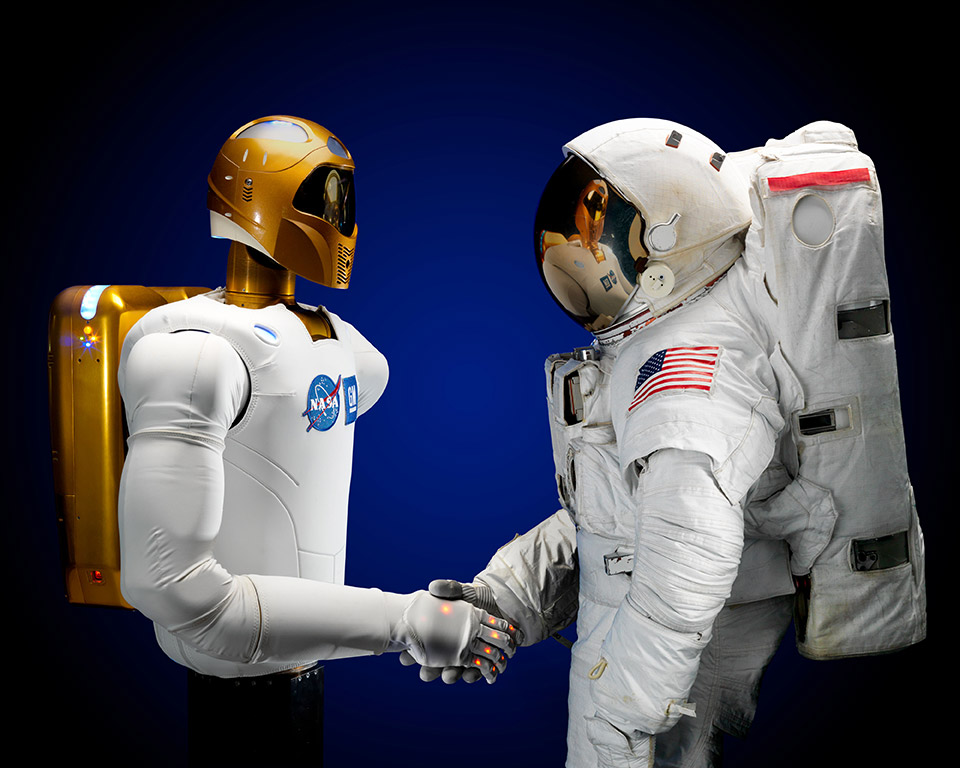
Astronauts' time and work is extremely valuable, but because of the conditions in which they perform their work, it's also extremely limited. NASA needed to develop Robonauts – dexterous humanoid robots – to help humans work and explore in space. Working side by side with humans or going where the risks are too great for people, Robonauts will expand NASA's ability for construction and discovery in space.
Business Challenge
Somewhat mundane tasks are taking up precious time that astronauts could be using to explore space. For example, air quality testing requires astronauts to hold air monitors still for extended periods of time – a difficult challenge in zero gravity and time-consuming procedure for astronauts. Eighteen different readings are taken and the procedure in place calls for over 2 hours of crew time.
The second-generation Robonaut, Robonaut 2 (R2), currently resides on the International Space Station (ISS). It exists as a torso bolted to a pedestal, and is connected to the station with wires for power and control. The robot becomes exponentially more useful if it can move freely throughout the station. But that free movement is only be possible if all of the wires are gone – including the ones used for control and monitoring.
Solution
NASA installed Digi International's ConnectCore Wi-i.MX53 wireless module to Wi-Fi enable the Robonaut.
The wireless module, qualified for industrial environments, passed a rigorous set of tests to ensure it could survive in outer space. Digi ran independent tests on temperature, vibration and shock to ensure the ConnectCore Wi-i.MX53 could survive the high vibration loads of launch and the rigors of outer space. All systems used in space must be able to be replicated exactly at the space station. So, Digi also provided an official certificate of conformity to guarantee the modules came from the same lot and are identical.
Results
Wireless Connection Increases Astronaut Productivity
The wireless connectivity provided by the ConnectCore Wi-i.MX53 helps enable the Robonaut to perform routine tasks such as housekeeping and air quality testing in space. Once the Robonaut is wireless and can move freely about the ISS, it will be able to conduct tasks, such as air monitoring, freeing up hours of time for astronauts to complete science experiments and other important jobs.
The ConnectCore Wi-i.MX53 allows astronauts to manipulate the Robonaut from anywhere within the ISS or the NASA Mission Control Center on Earth. This will allow ground personnel to control R2 remotely without the involvement of an astronaut, further saving an astronaut's time. The wireless link will also transmit views from four cameras on the Robonaut – two on the torso and two on the legs. This will allow astronauts and NASA control team members to see what the robot is seeing in real-time and to control its actions.
In addition to wireless connectivity and video transmission, the ConnectCore Wi-i.MX53 can log and store data to an SD Card and transfer it at a later time via the ISS Wi-Fi network. It will also provide communication between the torso and the backpack, which hosts the Robonaut's battery.
Making the Spacewalk
The wireless link is part of a plan for further upgrades to the Robonaut that will enable it to perform tasks outside of the space station. This could allow the Robonaut to assist the crew during spacewalking tasks, including work site setup and serving as an extra set of hands.
The Robonaut is set to head to space on February 22, 2014.